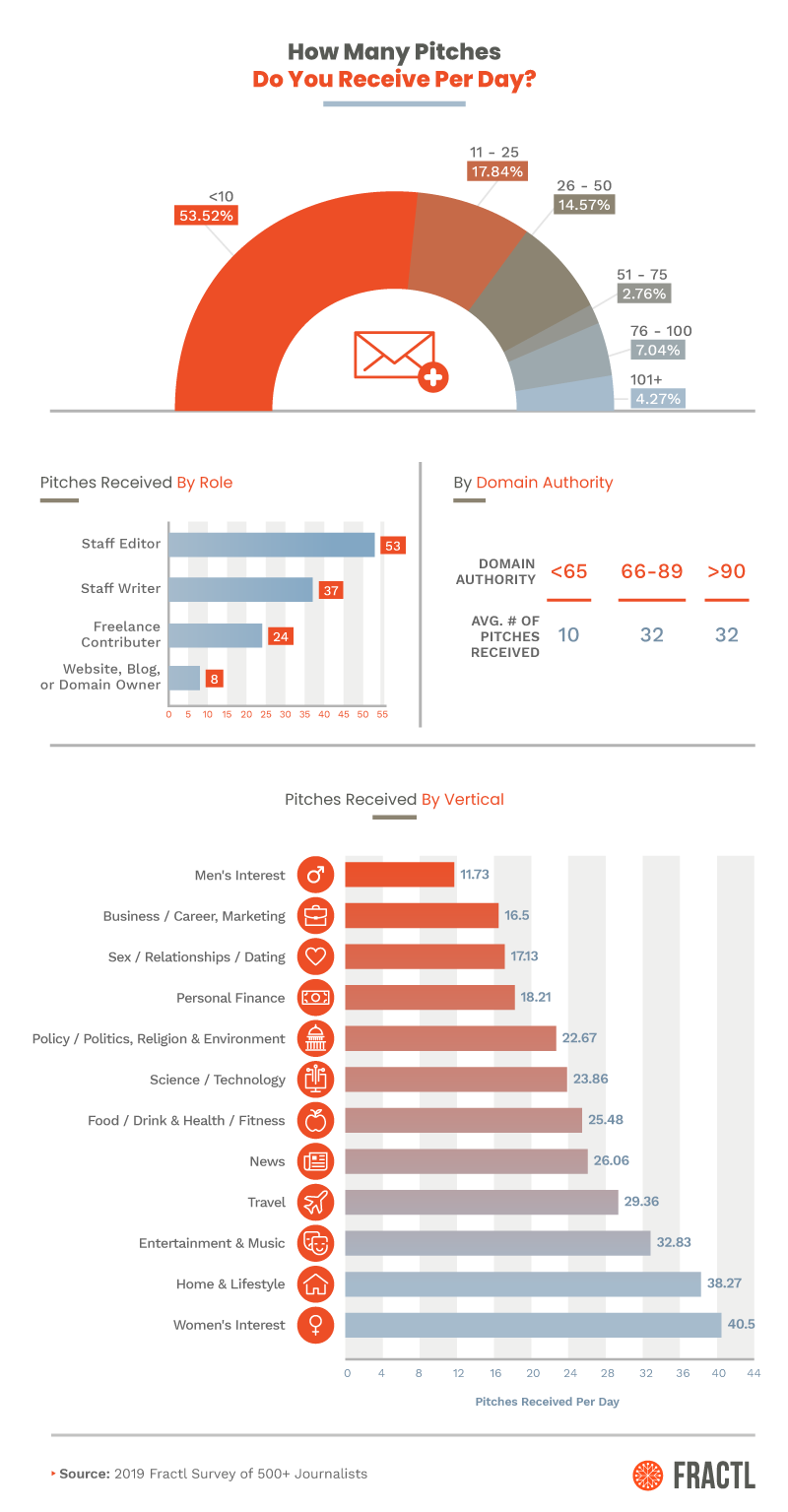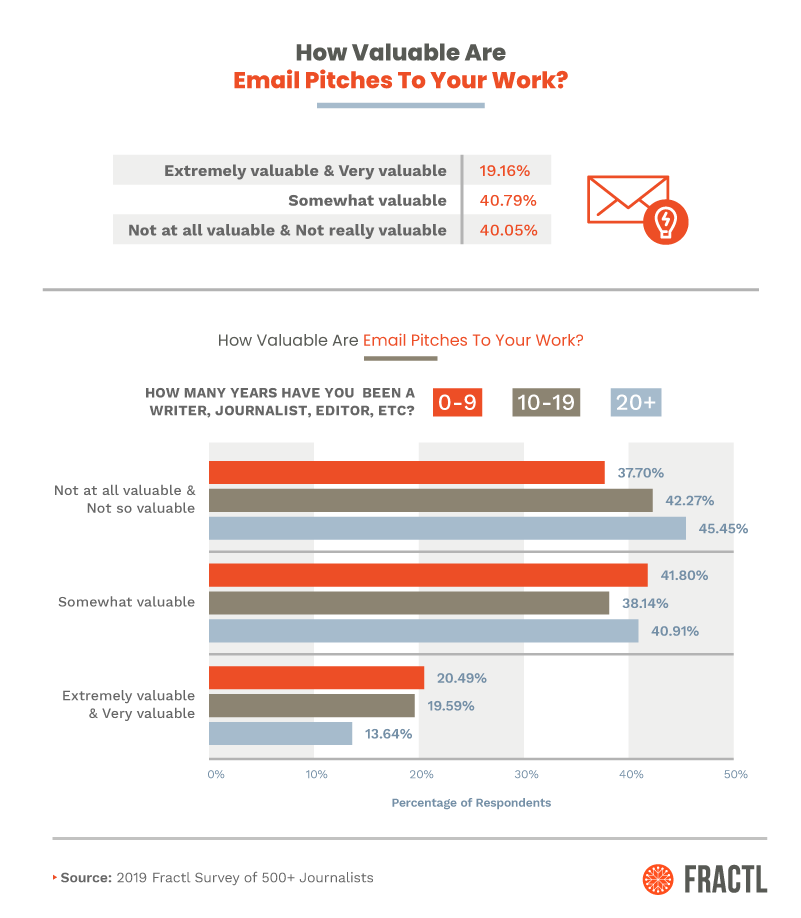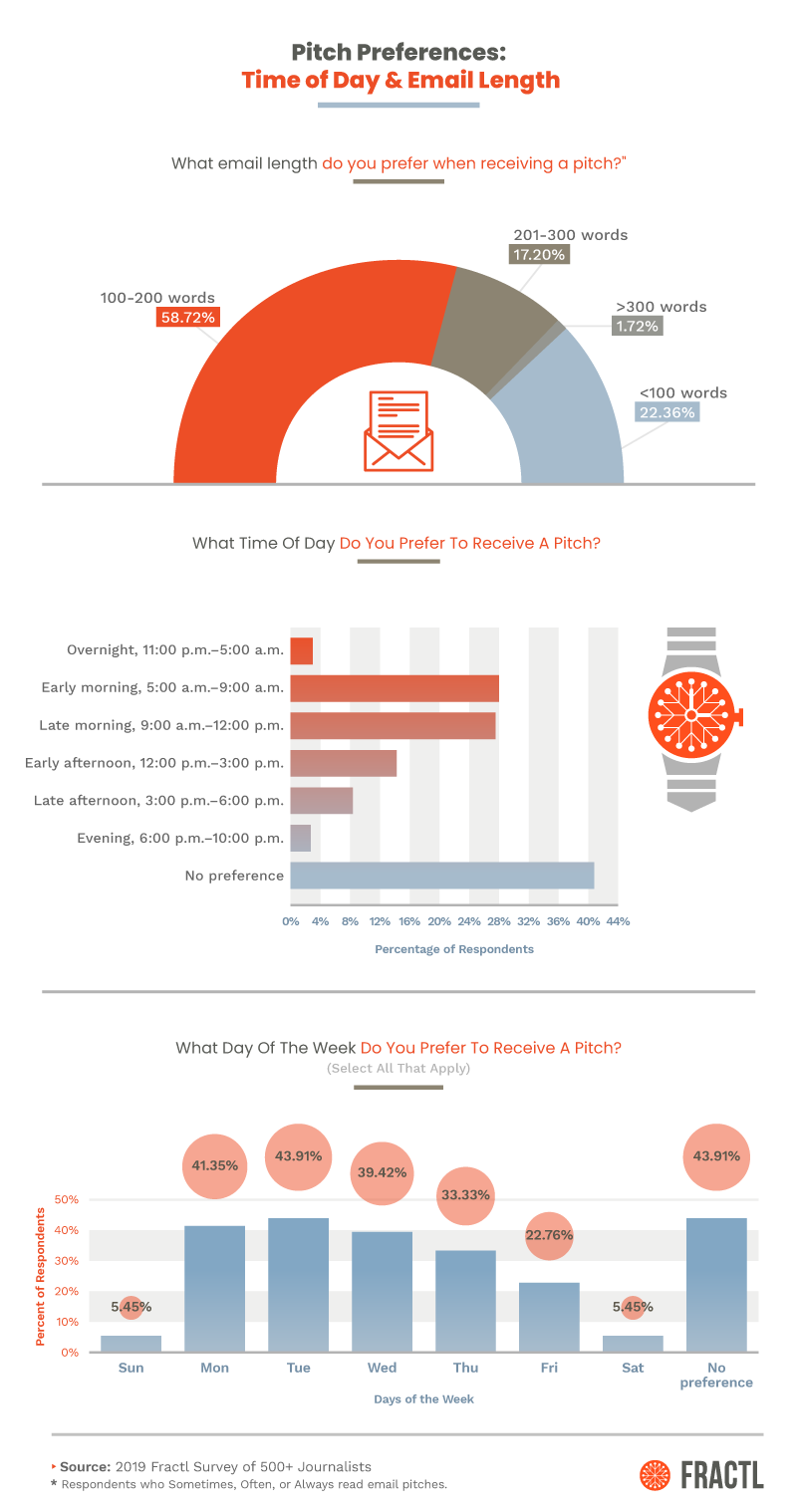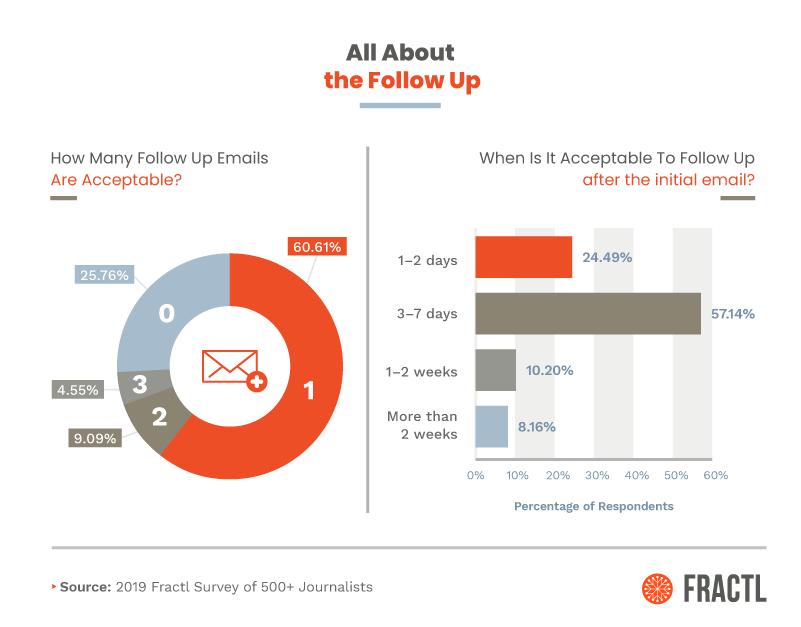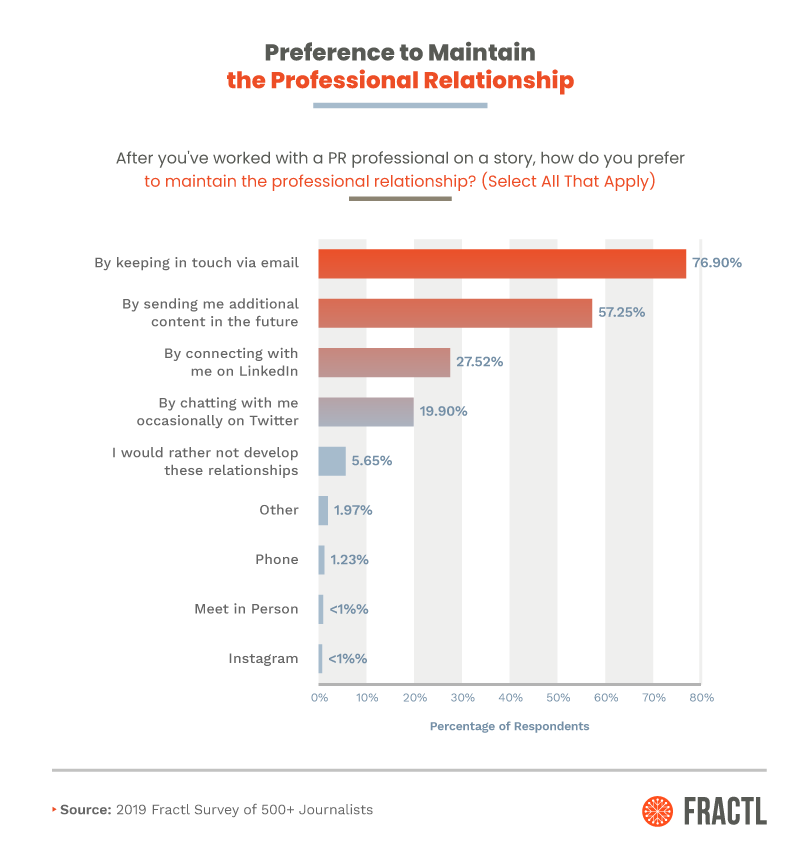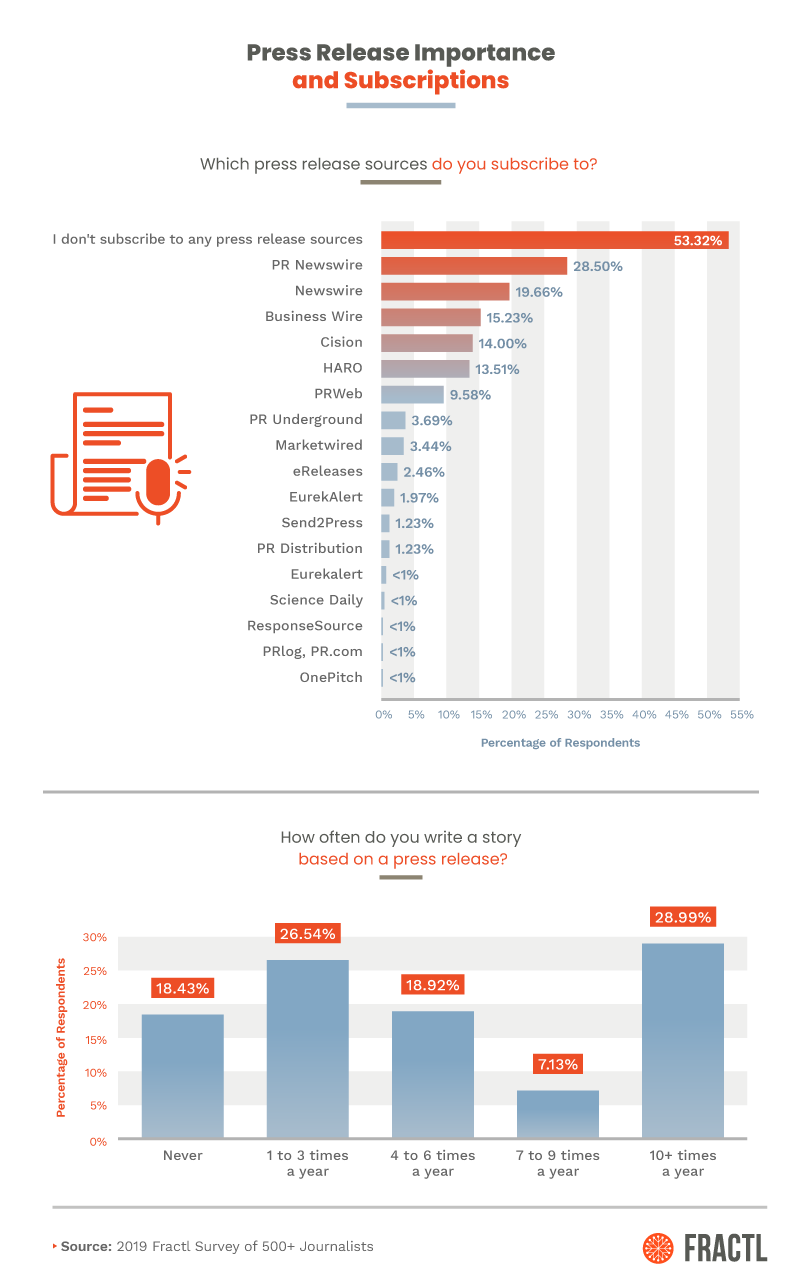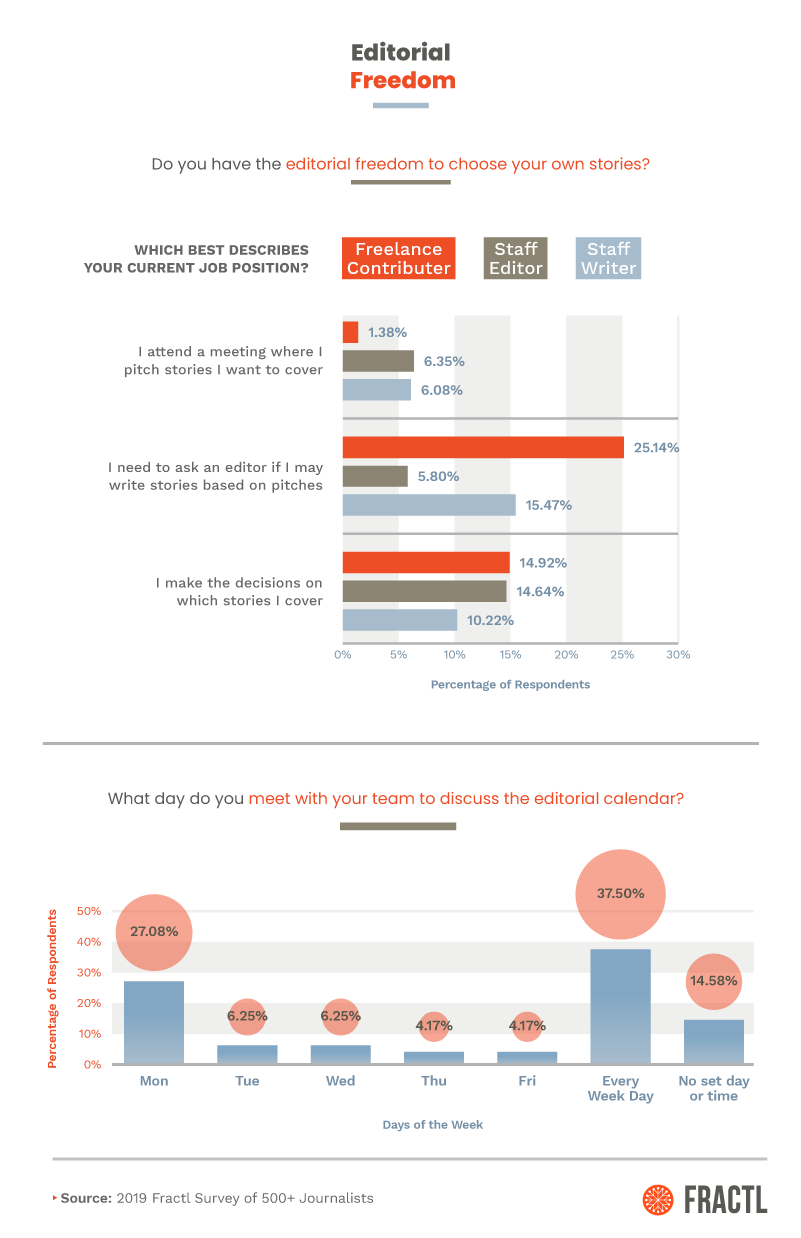We’ve all heard anecdotal evidence about how journalists want to be pitched, whether it’s through first-hand accounts or on social media. There is a ton of advice out there, and it’s key to be aware of how publishers want to be pitched and to be familiar with pitching to the media effectively so you don’t end up committing a #PRFail.
10 #PRFail tweets to help practitioners land coverage https://t.co/lHs8FGzEex pic.twitter.com/pcKkNr89kx
— PR Daily (@PRDaily) November 13, 2018
Fractl produces data-driven content marketing campaigns for our clients, which often reveal surprising insights that speak directly to their target industry as a whole.
Since we create these results for our clients daily, we wanted to follow a chapter from our own book and delve into the content marketing agency to investigate one aspect of what we do: digital PR, and specifically, pitching.
In a brand new exclusive survey, we received feedback from over 500+ journalists to learn more about how journalists prefer to receive email pitches in 2019. You will hear from writers, editors, and content creators that publish coverage from the Washington Post, Bustle, TIME, Elite Daily, the NYTimes, and more.
Content marketing is an ever-evolving industry, and with increased competition for media coverage, it’s harder than ever to pitch to the media and earn press coverage for your brand or business.
Here is what we learned.
How Many Email Pitches Do Journalists Receive Per Day?
Our survey found that just over 50% of respondents receive less than 10 pitches a day, which is good news for PR professionals hoping to stand out in a writer’s inbox. Over 42% of writers reported receiving 11 to 100 pitches a day, and almost 5% receive 100+ email pitches per day.
What this shows is that it really depends on who you pitch. Staff Editors are pitched the most, according to our data, receiving 53 pitches per day on average, while Freelance Contributors are pitched less often (around 24 pitches per day).
When it comes to topic and vertical, some beats are more competitive than others. Women’s Interest writers are receiving around 40 pitches per day, while surprisingly, Men’s Interest and Business and Career writers receive much fewer.
We also learned from the report that mid and high domain authority sites receive far more pitches than lower tier websites.
How Valuable Are Email Pitches To Journalists’ Work?
Just over 40% of journalist participants in our survey reported that email pitches are “not at all valuable” to their work. 20% of people who had been working in online journalism for less than 9 years found email pitches extremely or very valuable. Only 13% of those working in the field for more than 20 years could say the same.
Judging from these findings, we could argue that the longer someone has worked in the field of online journalism, the less likely they were to find email pitches valuable.
How Long Should Your Pitch Be, and When Should You Send it?
Of the writers that read email pitches, most writers (58%) prefer to receive a pitch between 100 and 200 words, although a fair amount (22%) would like you to go even further by cutting the filler and getting straight to the point with a pitch fewer than 100 words.
Of the writers that read email pitches, 40.79% have no preference for the time of day your email pitch arrives in their inbox. As for the day of the week, our data shows that Monday, Tuesday, and Wednesday are a writer’s favorite days to receive pitches.
So don’t even think about sending one on the weekend!
How Do Writers Feel About Follow Up Emails?
Finally—best practices for following up on pitches are revealed once and for all. Our data shows that journalists prefer 0 or 1 follow up emails an average of 3 to 7 days after you’ve sent your initial pitch.
How Do You Maintain A Professional Relationship With a Journalist After You’ve Worked With Them?
If you want to maintain a professional relationship with a writer after you’ve worked with them, you should keep in touch with them via email and continue sending the journalist relevant content. You may even want to add them on LinkedIn or Twitter after a few times of earning coverage with them. But tread carefully: 5% of writers say they prefer not to maintain a relationship.
Do Online Journalists Subscribe to Press Releases?
Over 53% of writers say they don’t subscribe to press release sources. That being said, the most popular ones are PR Newswire, Newswire, Business Wire, Cision, HARO, and PR Web.
Who Makes Decisions About the Editorial Calendar?
Staff Editors and Freelancers decide what they want to cover, although Freelance Contributors commonly have to ask permission from an editor to go forth with a story idea. Staff Writers are more likely to be assigned to the content they cover for the day or have to pitch it to their editors for approval.
Around 6% of writers and editors attend a meeting in which they decide what to cover on their upcoming editorial calendar. That meeting, according to our data, either occurs every day (likely in the morning) or commonly on Monday.
Conclusion – Pitching to the Media with Ease
To recap, here are some of the strongest takeaways from our research. These findings can act as a framework when crafting your pitching checklist:
- 50% of journalists receive less than 10 pitches a day. Just over 42% of writers reported receiving 11 to 100 pitches a day, and almost 5% receive 100+ email pitches per day.
- Staff Editors are pitched the most, and some topic areas are more congested than others when it comes to incoming pitches.
- 40% of writers do not consider email pitches to be valuable to their work, while another 40% believe they are somewhat valuable. Nearly 20% found email pitches to be very important to their work.
- Most writers (58%) prefer to receive a pitch between 100 and 200 words.
- Monday, Tuesday, and Wednesday are the best days to send pitches.
- Our data shows that journalists prefer 0 or 1 follow up emails an average of 3 to 7 days after you’ve sent your initial pitch.
- If you want to maintain a professional relationship with a writer after you’ve worked with them, you should keep in touch with them via email and continue sending the journalist relevant content.
- Over 53% of writers say they don’t subscribe to press release sources.
- When you pitch Staff Writers, they likely have to pitch the idea to their editors for approval.
There are now more than 6 PR professionals for every 1 journalist, so competition for pitching to the media is higher than ever. Use this data to optimize your pitching practices and earn more press mentions for your brand or client.
Want even more tips? Download our free Ultimate Guide to Digital PR eBook here!
Methodology
We collected over 500 responses from online journalists, writers, and bloggers (either employed by an online publisher or working as a freelance contributor). We asked respondents a series of questions about PR pitches and their work in online publishing.

